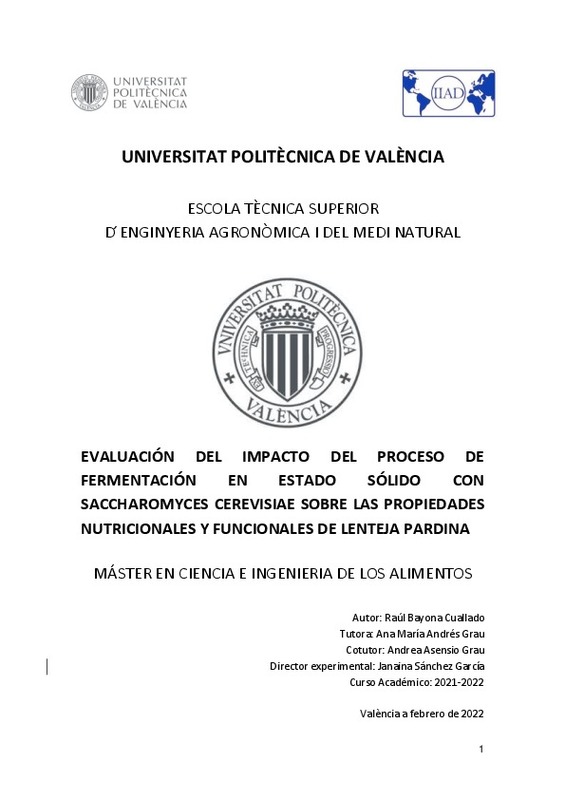- RiuNet repositorio UPV
- :
- Docencia
- :
- Trabajos académicos
- :
- ETSIAMN - Trabajos académicos
- :
- Ver ítem
JavaScript is disabled for your browser. Some features of this site may not work without it.
Buscar en RiuNet
Listar
Mi cuenta
Estadísticas
Ayuda RiuNet
Admin. UPV
Desde el lunes 3 y hasta el jueves 20 de marzo, RiuNet funcionará en modo de solo lectura a causa de su actualización a una nueva versión.
Evaluación del impacto del proceso de fermentación en estado sólido con Saccharomyces cerevisiae sobre las propiedades nutricionales y funcionales de lenteja pardina
Mostrar el registro completo del ítem
Bayona Cuallado, R. (2022). Evaluación del impacto del proceso de fermentación en estado sólido con Saccharomyces cerevisiae sobre las propiedades nutricionales y funcionales de lenteja pardina. Universitat Politècnica de València. http://hdl.handle.net/10251/181240
Por favor, use este identificador para citar o enlazar este ítem: http://hdl.handle.net/10251/181240
Ficheros en el ítem
Metadatos del ítem
| Título: | Evaluación del impacto del proceso de fermentación en estado sólido con Saccharomyces cerevisiae sobre las propiedades nutricionales y funcionales de lenteja pardina | |||
| Autor: | Bayona Cuallado, Raúl | |||
| Director(es): | ||||
| Entidad UPV: |
|
|||
| Fecha acto/lectura: |
|
|||
| Resumen: |
[ES] La lenteja (Lens culinaris) es una de las leguminosas altamente consumidas en el mundo ya que son una fuente rica de rica de proteínas, micronutrientes esenciales y antioxidantes (Khazaei et al., 2019). También hay ...[+]
[EN] Lentil (Lens culinaris) is one of the most consumed legumes in the world because they are a rich source of protein, essential micronutrients and antioxidants (Khazaei et al., 2019). It is also worth to add that the ...[+]
|
|||
| Palabras clave: |
|
|||
| Derechos de uso: | Reserva de todos los derechos | |||
| Editorial: |
|
|||
| Titulación: |
|
|||
| Tipo: |
|
recommendations
Este ítem aparece en la(s) siguiente(s) colección(ones)
-
ETSIAMN - Trabajos académicos [3556]
Escuela Técnica Superior de Ingeniería Agronómica y del Medio Natural







